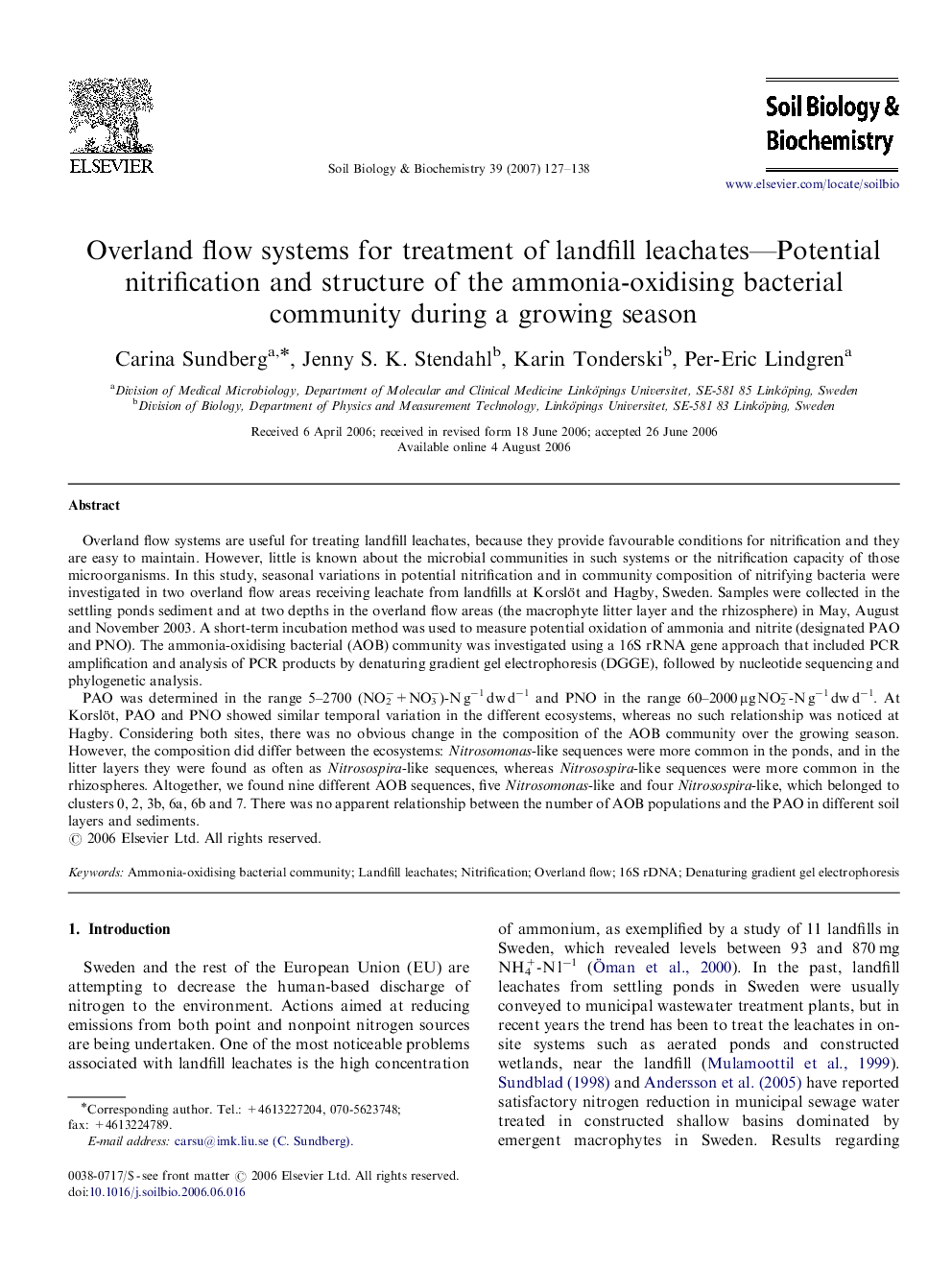| Article ID | Journal | Published Year | Pages | File Type |
|---|---|---|---|---|
| 2025872 | Soil Biology and Biochemistry | 2007 | 12 Pages |
Overland flow systems are useful for treating landfill leachates, because they provide favourable conditions for nitrification and they are easy to maintain. However, little is known about the microbial communities in such systems or the nitrification capacity of those microorganisms. In this study, seasonal variations in potential nitrification and in community composition of nitrifying bacteria were investigated in two overland flow areas receiving leachate from landfills at Korslöt and Hagby, Sweden. Samples were collected in the settling ponds sediment and at two depths in the overland flow areas (the macrophyte litter layer and the rhizosphere) in May, August and November 2003. A short-term incubation method was used to measure potential oxidation of ammonia and nitrite (designated PAO and PNO). The ammonia-oxidising bacterial (AOB) community was investigated using a 16S rRNA gene approach that included PCR amplification and analysis of PCR products by denaturing gradient gel electrophoresis (DGGE), followed by nucleotide sequencing and phylogenetic analysis.PAO was determined in the range 5–2700 (NO2−+NO3−)-N g−1 dw d−1 and PNO in the range 60–2000 μg NO2−-N g−1 dw d−1. At Korslöt, PAO and PNO showed similar temporal variation in the different ecosystems, whereas no such relationship was noticed at Hagby. Considering both sites, there was no obvious change in the composition of the AOB community over the growing season. However, the composition did differ between the ecosystems: Nitrosomonas-like sequences were more common in the ponds, and in the litter layers they were found as often as Nitrosospira-like sequences, whereas Nitrosospira-like sequences were more common in the rhizospheres. Altogether, we found nine different AOB sequences, five Nitrosomonas-like and four Nitrosospira-like, which belonged to clusters 0, 2, 3b, 6a, 6b and 7. There was no apparent relationship between the number of AOB populations and the PAO in different soil layers and sediments.
